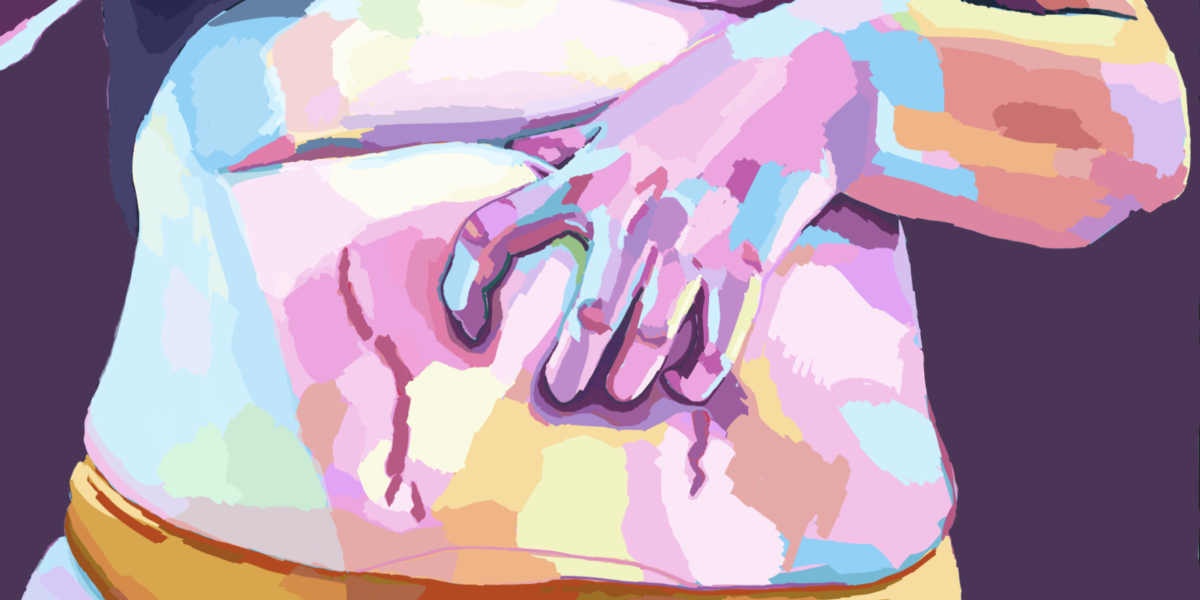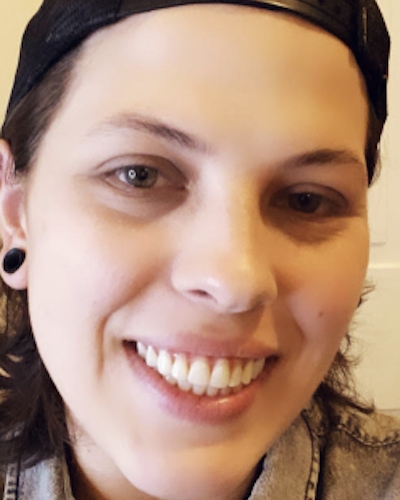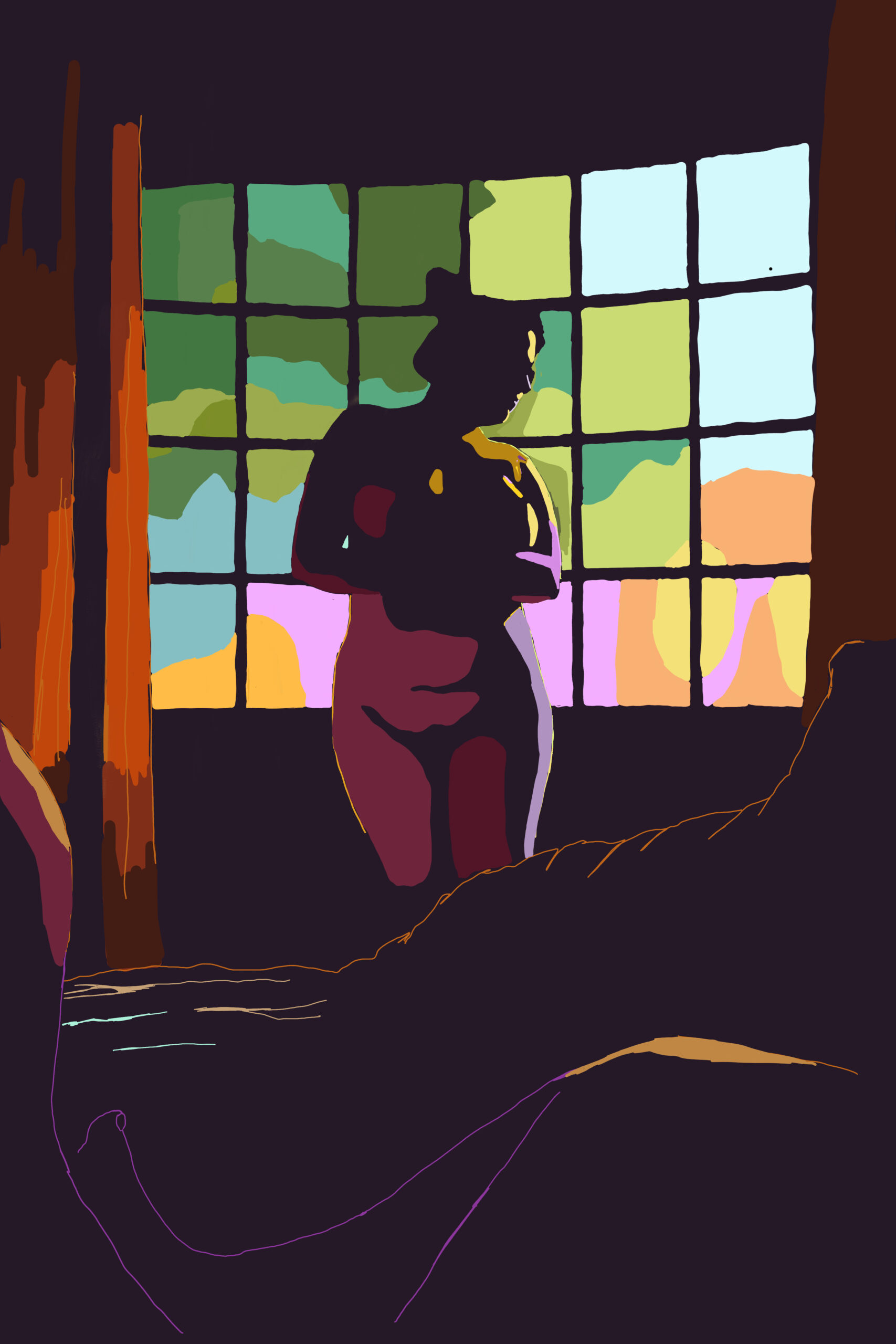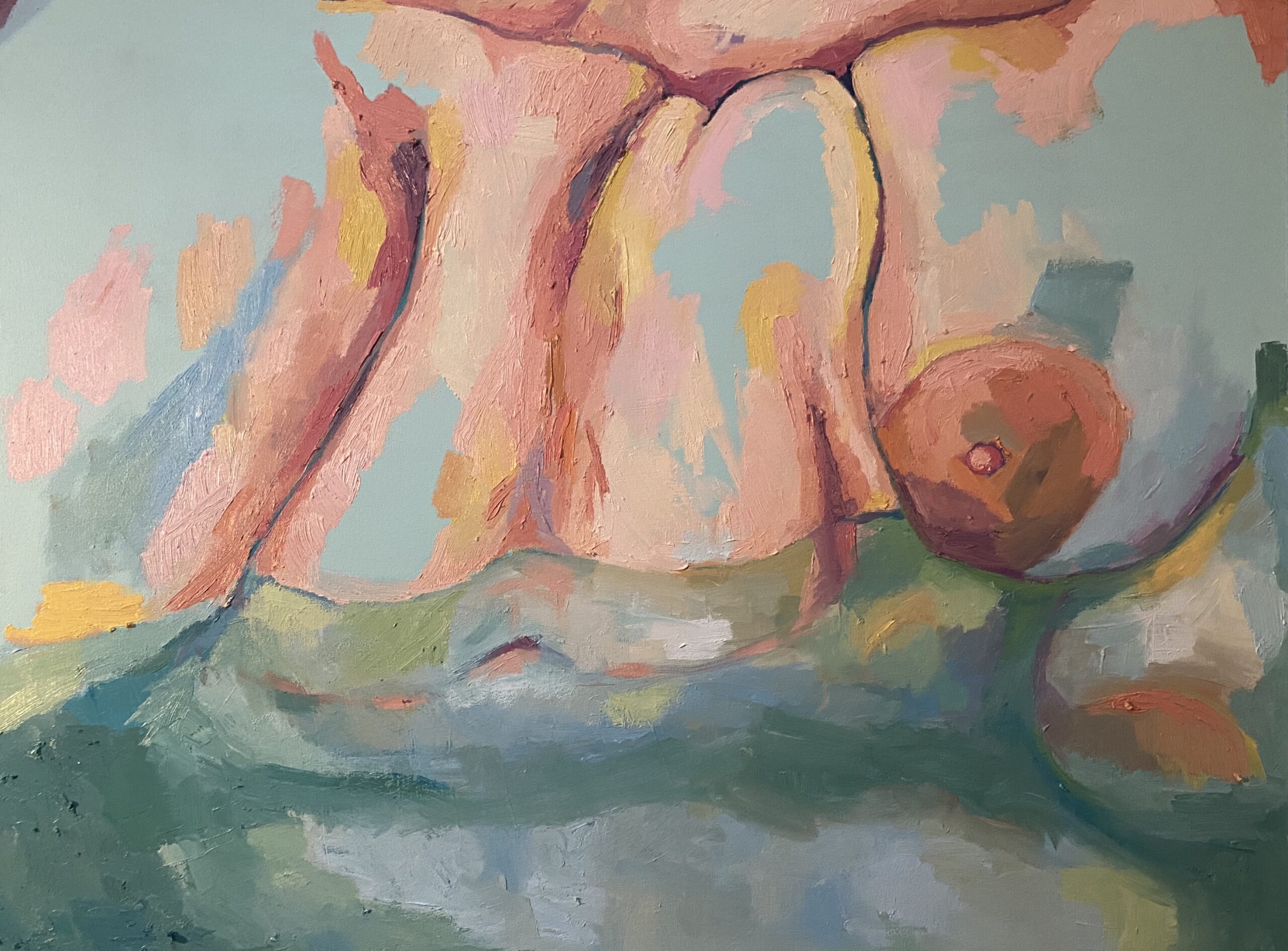
Rachel Yinger ’14 paints a ‘Re Union’ of artwork and zines in the Hayden Gallery
Tuesday, September 3rd, 2024


“Windows”, by Rachel Yinger.
Rachel Yinger: It was! The title came from the idea of a ten-year reunion. I’ve been back working here for about a year and a half, but it’s now been ten years since I graduated. I split the word “reunion” into two words to reflect a common theme in my titles of splitting compound words into two words to add another layer of meaning. Some of the older pieces were painted as part of my portfolio to get into grad school. I tried to select about one painting per year since I graduated from PCA&D to show progression, but also a cohesive collection of work. The zines are a bit of a collection within themselves. The “Wildly Speculating” series began while I was in grad school and continues today. The other zines were also created in grad school as part of different projects.
Inclusivity is obviously a theme that resonates with you. How does that theme show itself in Re Union?
RY: Most of my paintings are about myself. The subjects of some of my zines are more external, but still a reflection of myself and my experiences as a fat queer person. The piece that stands out the most to me as being about inclusivity is my zine called “Women’s Colleges & Transgender Policies”. It contains the admissions and matriculation policies (as of Fall 2018) regarding transgender students of every women’s college in North America. When a school did not have a clear policy on their website, I emailed the admissions team to ask what it was. If they answered, I included that in the zine. It was an eye-opening project that coincided with an exhibition I curated at Moore (historically a women’s college) of work by transgender undergraduate students. This exhibition, along with other efforts by Moore students, led to the college changing their policy to be more inclusive of transgender and non-binary students. I believe they’ve changed it twice since then. I’m sure other colleges have also changed their policies since I created the zine, so I’m hoping to do an updated version of it.

“Under Water”, by Rachel Yinger.
Your color palette in this show is bright and clear. Has that always been the case for your personal work?
RY: It started when I was a student here at PCA&D. In a drawing class my junior year, I decided to only do work with colored Sharpies. This helped me see color in things differently and push my palette to be brighter.
Are you inspired more by reflective moments, or grand, dramatic ones?
RY: Both really. I like taking personal, reflective moments and making them large and dramatic. I think it shows how impactful a small personal moment can be.
What process do you follow when starting a new work (deciding on the materials and dimensions of the work: does that come first, or the subject matter)?
RY: When it comes to painting, I usually start with an idea or a feeling that I capture with a photograph. I then do a basic drawing from the photograph, sometimes in my sketchbook, or sometimes directly onto the canvas. I typically prime my canvas with latex paint. This also started when I was a student at PCA&D. I find that it helps lead the color palette in that bright direction that I want.
For zines, particularly the Wildly Speculating series, I think of a movie or a character in a movie that resonated with me as a young queer person. Then I watch it again and take notes about all of the movie’s queer subtext. I then use the notes to write about the movie’s queer themes and subtext and its impact during its time. I use Photoshop and InDesign to lay out the zine, create digital colleges, and add the text. Some also include digital drawings of characters or symbols found in the movie.
What do you hope your audience gleans from viewing “Re Union”?
RY: I hope people are able to relate to the work. And if they don’t relate to it, I hope they learn something from it. I heard once that the more personal you are, the more relatable you are, and that has really stuck with me. I think of that whenever I worry about my work being too personal.
Top image: “Stretch Mark”, Rachel Yinger, with permission of the artist
